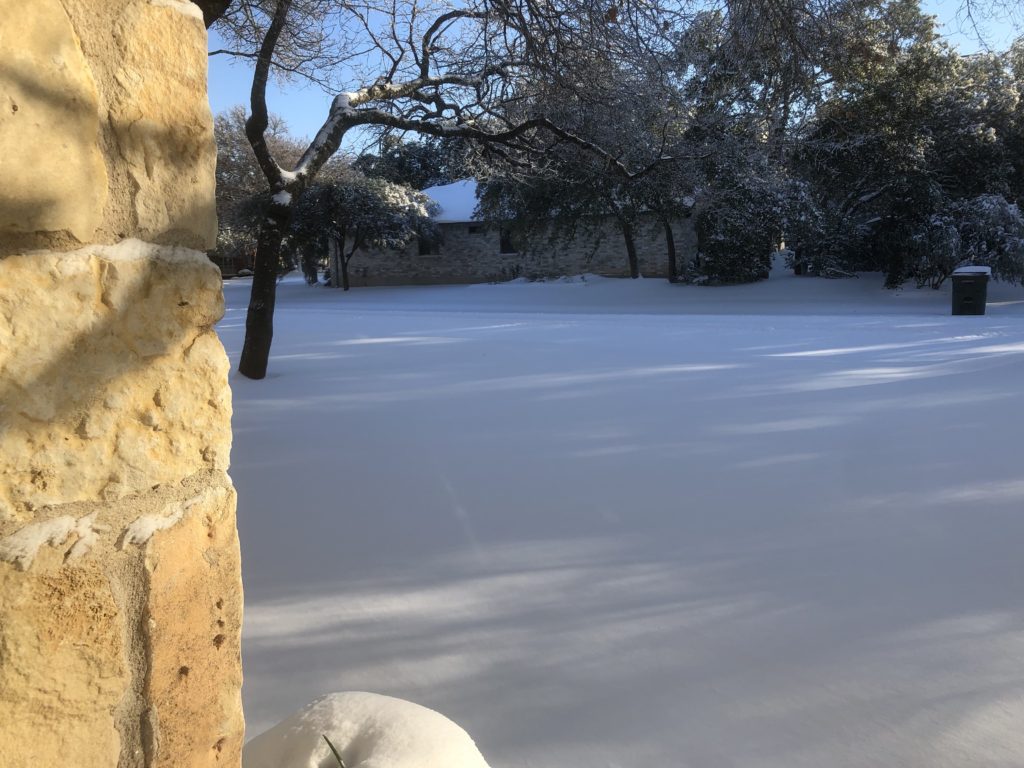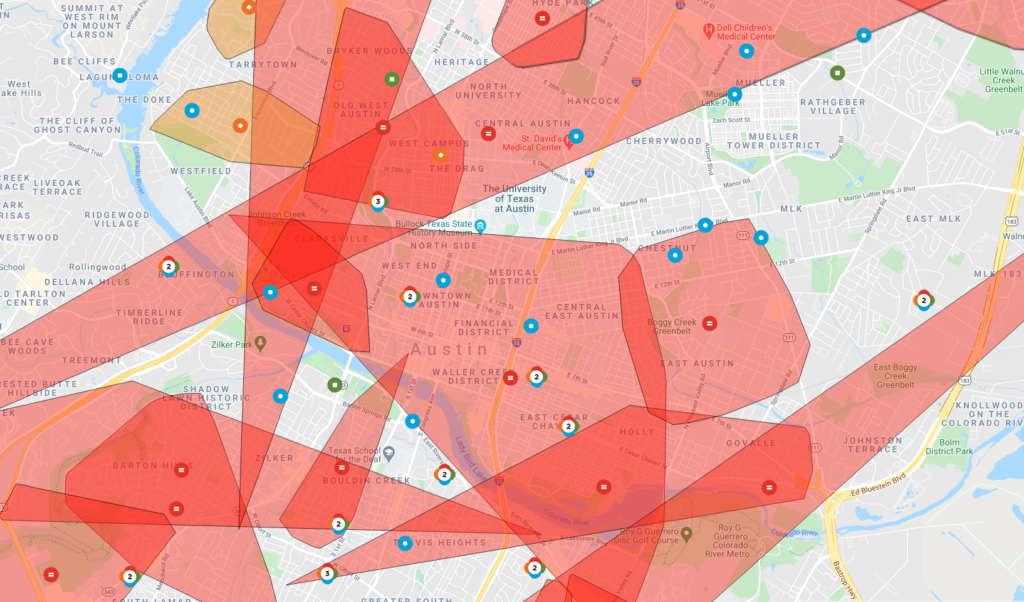It. Has. Been. A. Week!
Regular readers know that Austin has been climbing out of a once in a century winter storm that froze our roads and wrecked our power grid. Right now it’s still 19°F, but it’s supposed to warm up to a balmy 39°F this afternoon…
Passage of this bill this year would lead to job losses and higher use of labor-reducing equipment and technology,” said Sean Kennedy, executive vice president for public affairs for the National Restaurant Association. “Nearly all restaurant operators say they will increase menu prices. But what is clear is that raising prices for consumers will not be enough for restaurants to absorb higher labor costs.”
But for the fact that he’s president — given his track record of having been wrong on every defense and foreign policy issue for almost five decades — it would be easy to ignore his assessment of China. This is a man who said in 2019, “China is going to eat our lunch? Come on, man.” He added, “I mean, you know, they’re not bad folks, folks. But guess what? They’re not competition for us.” Despite the difficulty of being wrong on both occasions Biden managed it.
Focus for a moment on what he said about the conversation with Xi. It is natural that China would be spending billions on transportation given the size of the country and the billions who inhabit it. Whether it is true that China is spending billions on climate change is another matter. It has, for decades, been spending billions on coal-fired electricity generation plants and has only recently made noises about reducing pollution.
But “climate change” is probably the last priority for China while it is spending far greater sums on its military and cyberwar capabilities. Xi was clearly trying to gull Biden into some sort of race to reduce greenhouse gas emissions so that we could strangle our economy while China doesn’t do the same to its own. China may well be trying to reduce pollution — Beijing is infamous for its barely breathable brown air — but how much it is really doing remains to be seen.
Biden apparently wants to be known as the “climate change president.” If Xi can increase Biden’s desire to make climate change his top priority for legislation and regulation (which seems altogether likely in any event) China will be greatly advantaged by Biden’s concomitant reductions in spending on the U.S. military and intelligence communities.
To say that Biden is soft on China only proves the speaker’s command of the obvious.
What Tenev did not say, or explain, is why his company – which is merely a client-facing front of Citadel, which buys the bulk of Robinhood’s orderflow to use it perfectly legally in any way it sees fit – was so massively undercapitalized that the DTCC required several billion more in collateral to protect Robinhood’s own investors against the company’s predatory ways of seeking to capitalize on the gamification of investing making it nothing more (or less) than a trivial pursuit to millions of GenZ and millennial investors, a point which Michael Burry made so vividly.
The #mainstreetrevolution is a myth. Zero commissions and gamified apps were designed to feed flows to the two most influential WS trading houses. A few HFs got hurt, but if retail is moving toward more trading and away from fundamentals, WS owns that game. #Stonks by design. https://t.co/Y4raF0jiM3
— Cassandra (@michaeljburry) February 9, 2021Incidentally we know why Tenev did not mention it: it’s because Robinhood’s back office is a shambles of a shoestring operation, one which never anticipated either such a surge in trading not a multi-billion collateral requirement; had Robinhood been a true brokerage instead of pretending to be one, and run merely to open as many retail accounts as it could in the shortest amount of time, thus generating the most profit in the quickest amount of time to allow its sponsors a quick and profitable exit, it would actually have been on top of this.
SpaceX wants to bring fast satellite broadband internet to the world — and in particular, to internet users in far-flung, rural locations, where download speeds are low and prices are high.
One of the first places in America to get SpaceX Starlink service was Alaska, the state with the lowest population density in the country — just one person per square mile. The company next extended service into Canada (population density: three people per square mile), followed last month by service in the UK — a big jump in concentration, with 650 people per square mile. (Even in the UK, there are plenty of isolated locations where internet service is expensive, slow — or both).
SpaceX’s globe-spanning satellite constellation should be capable of providing 100 megabit-per-second internet service to anywhere by the end of this year. You can expect that a lot of countries, no matter how urbanized they are (or not), will be lining up to sign up for Starlink service. And the more countries Starlink signs up as customers, the better the prospects for the SpaceX subsidiary’s promised IPO.
One country that most definitely does not want Starlink, however, is Russia.
Snip.
As Ars points out, “Russia is planning its own satellite Internet constellation, known as ‘Sphere.'” And in contrast to SpaceX’s Starlink, which is a privately funded and privately built communications system, the 600-satellite Sphere constellation will be a project built and run by the Russian state under the aegis of its Roscosmos space agency. And that could be a problem.
Sphere, you see, is rumored to cost $20 billion to build, may not begin launching until 2024, and won’t be completed before 2030.
Those numbers alone tell you Sphere will never be built, Starlink or no Starlink. Russia is a profoundly broke and profoundly broken country. Sphere is just the sort of prestige project Putin loves to announce to much fanfare, national greatness vaporware that either never gets built or else creeps out into the real world years (or even decades) late and in much-reduced form, like only ordering 100 T-14 Armata tanks.
When I adjust to population, the differences are even more striking. pic.twitter.com/ll0GXQvqvg
— Vincent Rajkumar (@VincentRK) February 17, 2021
Wow who made this
pic.twitter.com/8gFXozIYWQ
— Raheem Kassam (@RaheemKassam) February 12, 2021
Back in 1977, the New York Times maintained that as long as Nazis did not engage in any illegality, they were “entitled” to the protection of the law, and then put the onus of maintaining peace on the Skokie residents:
The argument that they will provoke violence simply by appearing on the streets of Skokie only emphasizes the obligation of the police to keep the peace—and gives an opportunity the people of Skokie to demonstrate their respect for the law.
These days, the Times board will chase you out of the building for allowing anyone to voice an opinion that chafes against the brittle sensitivities of its writers. The paper employs full-time speech monitors to vet wrongthink.
Here are the names of the 200+ slaves owned by Kamala Harris’ ancestor Hamilton Brown in Jamaica in 1817. One of the largest planters in Jamaica, Brown now has a town named after him, Brown’s Town pic.twitter.com/6QnBpEQyez
— Dinesh D'Souza (@DineshDSouza) August 12, 2020
A helicopter running on fossil fuel spraying a chemical made from fossil fuels onto a wind turbine made with fossils fuels during an ice storm is awesome. pic.twitter.com/3HInc2qKb9
— Luke Legate (@lukelegate) February 15, 2021
(Hat tip: the Ace of Spades HQ pet thread.)

